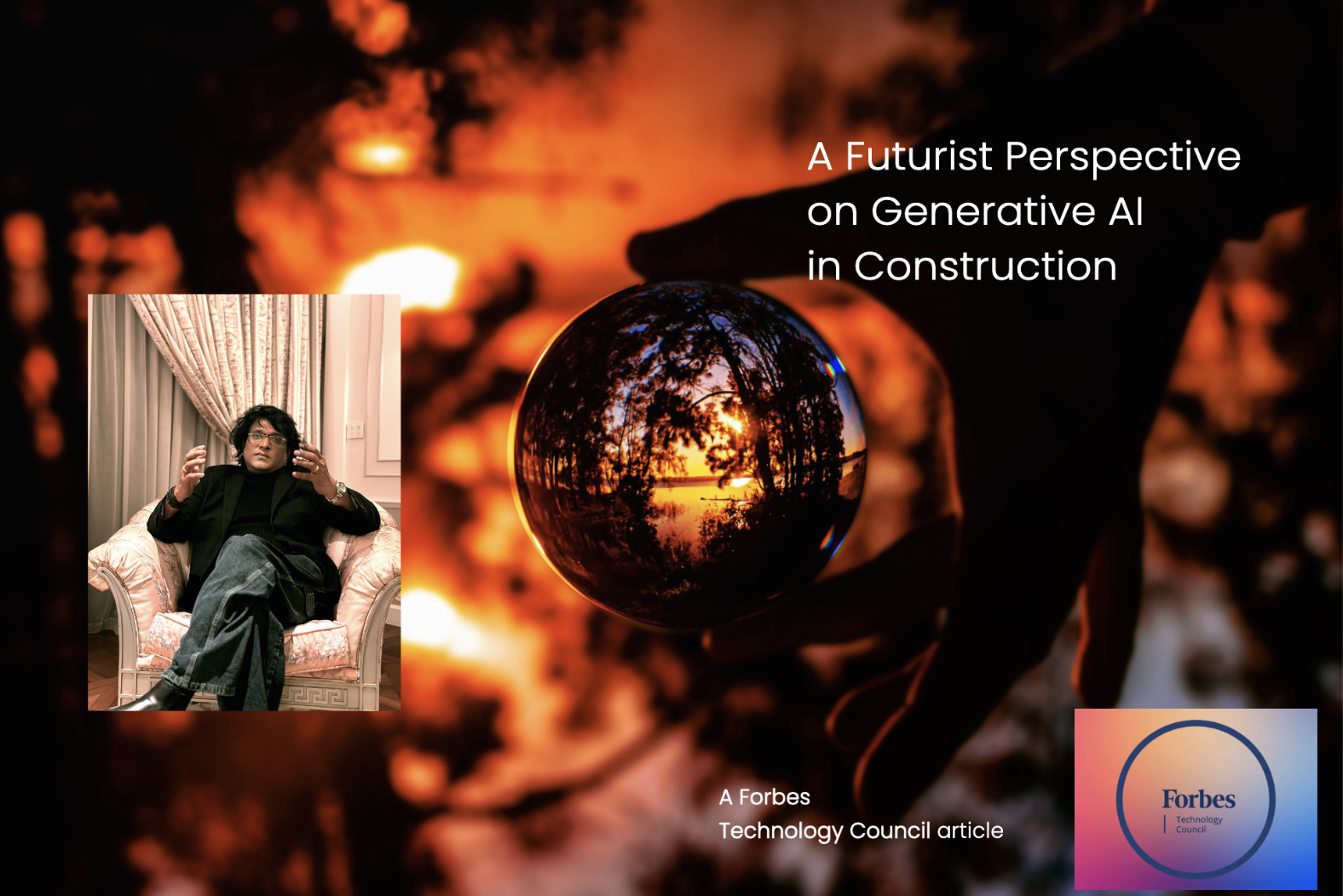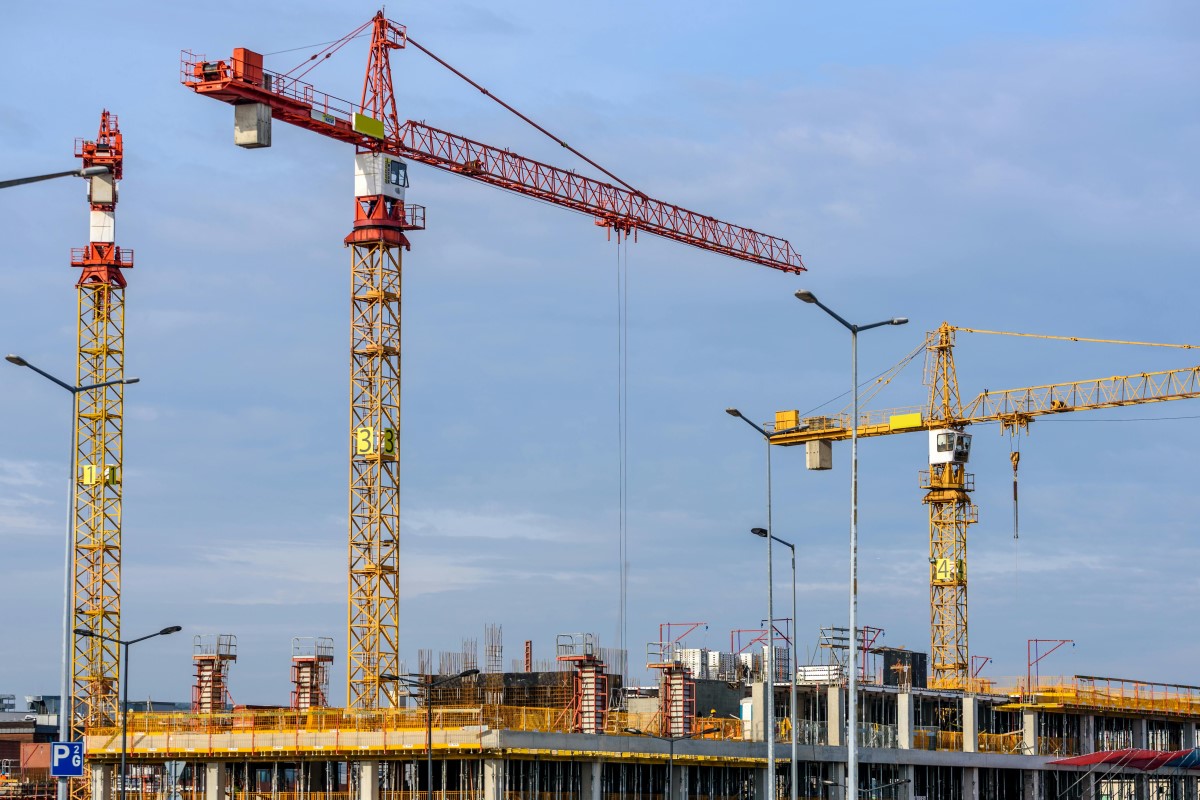A Futurist Perspective on Generative AI in Construction

Senthil is the CTO of Slate Technologies with advanced technology creation under his direction across global entities.
Ah, the creative powers of men and machines. As the world embraces a new order in AI, intelligence in construction is not just about optimizing concrete, steel, schedules and structures. It's about building a future that we are all proud of—one that is resilient and sustainable besides being welcoming and that sets the tone for generations to come.
As the machines get creative and generative, the advancements in AI and related computational technologies will empower us to design with the imagination of an artist and the precision of an engineer—promising a world where every schedule devised, every beam raised and every brick laid is a step toward innovation fostering productivity, profitability and predictability.
I'll share some of my thoughts on the current advancements in AI being applied to construction, a number of which we are proud to innovate and pave the way for the industry to follow.
Embracing Change With The New World Order
The world woke up to the democratization of AI in one fine sweep. The landscape and expectations of computational intelligence have since been irrevocably altered. It has touched—and will continue to touch—the lives of everyone who comes into contact with it, whether they embrace it or choose to ignore it.
At the workplace, generative AI will redefine and change the way we work, create and build endeavors of intellect and physical things—from C-level executives to all levels of the organization. Machine-engineered, human-led solutions in the near term will shift to machine-led, machine-engineered solutions in the not-so-distant future.
As the investment in (and evolution of) language models continues, the complexion of the models will invariably change to specialized models that are right-sized and competency-trained with specific industry knowledge. Domain-specific models will overtake generic ones. Contrary to the noises and debates we have, AI is more than just large language models (LLMs). There is predictive power, introspective, inferencing and computations on vision, audio, statistical and multiple data modality.
While many industries aspire to adopt the generative capabilities of AI, I have seen a cautious approach in the construction industry, which is not unusual. This is an industry that has been battered by unrealized technological promises, economic influences, and inflationary and recessionary tales—even though it has influenced the microeconomic and macroeconomic conditions at a global scale and has swung the economies of countries.
How do we then meaningfully employ these technological advancements, and where do we see the major impact in the near future?
Looking Ahead
There are a few areas where advancements in AI (specifically generative, predictive and introspective intelligence) will play a major role based on my experience in the field as a technical advisor.
Generative Designs And Planning
Building information modeling (BIM) has become the standard for the high-fidelity dimensional representation of a real-world building. Work is progressing in leveraging generative AI to generate designs based on the architect's intent.
Machine intelligence will factor in the intent and formulate schedules, associate tasks to geometry and perform estimation using multicriteria analysis. Such systems can add dimensionality besides space, time, cost, sustainability and more. At our company, we are working on advanced AI algorithms that enable this.
AI's generative powers can help with optimal designs for a given scenario. "Hey system, generate a 50-story building design for office occupancy" is a potential conversation with the machines, and they'll come up with multiple design options including floor plans that are optimized for cost and constructability. Google, OpenAI, Anthropic and our company have made promising progress with a generation of multimedia-induced designs based on intent.
The immediate future will see machines taking human-devised designs, optimizing them and enabling them. It can foster dimensionality to a design, evaluate and make recommendations for constructability, and make recommendations for sustainability. Solutions are being worked on in academia and by commercial providers at this time.
Optioneering, Prefab And Modular Construction
From a base design, based on user intent and input formulations, multiple options for specific intents can be cost-effectiveness, supply availability, schedule variance and more. The system will be able to generate multiple options and prime the design for prefab and modular construction. Our technology highlights the future of how this shall shape up.
Optimized Schedule Generation
Gone will be the days when humans devised a construction schedule. Systems will have the ability to generate schedules based on geometry and geospatial considerations. Recipes being formulated for specific construction aspects, and a superstructure imbibing such recipes and formulating a master schedule that can adapt to specific locale and topography is not far from now. Work is progressing on this front in the ConTech sector.
Smart Cost Estimation
One common challenge in project takeoffs and management is the accuracy with which cost estimates can be done before and during construction. Systems with generative capabilities will help with cost estimation at multiple levels—financial, schedule, carbon spend and more.
Human-Machine Interfaces
Construction is an industry that embraces multiple machines besides computational machinery. There will be a harmonious interplay of BIM, drones, robotics and multisensory perception. We will see more creative endeavors of this interplay with GenAI capabilities, proactive monitoring, inferencing progress updates from the field, and triangulation of multiple sources of data to create custom solutions and directives to enable the effective and successful completion of projects.
Conclusion
The future is exciting. There is tremendous potential for the employment of advanced AI technologies to aid the field of construction. Generative AI will bridge the missing link between data, analysis and intelligence. Its creative powers will offer human intelligence, and the augmentation of a learned expert will help guide our mental model. Solutions that were deemed aspirational in the past will be practically realized as system intelligence matures.
However, not all is going to be rosy or picture-perfect. Machines will make mistakes, and there will be ethical and legal consequences for ill-designed and ill-trained systems. Too much emphasis on machine intelligence without proper gating controls will be counterproductive. Human intellect will still win. Embrace the change but be prudent about how we create and engage these creative powers.
Source: Forbes

